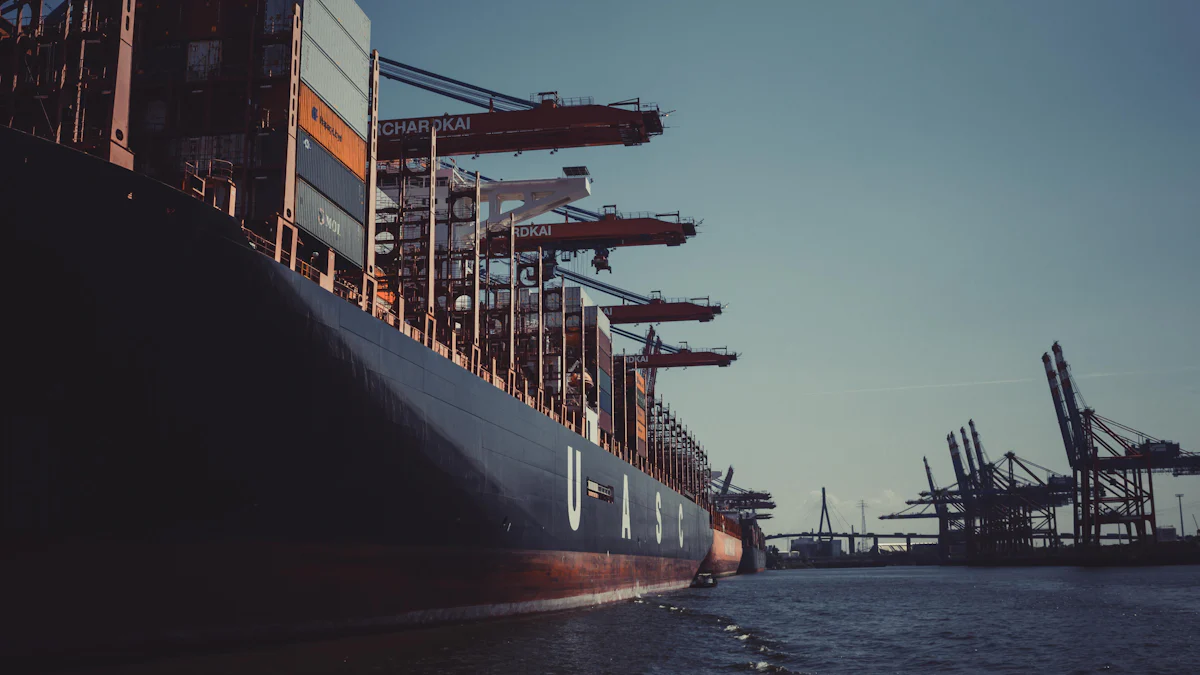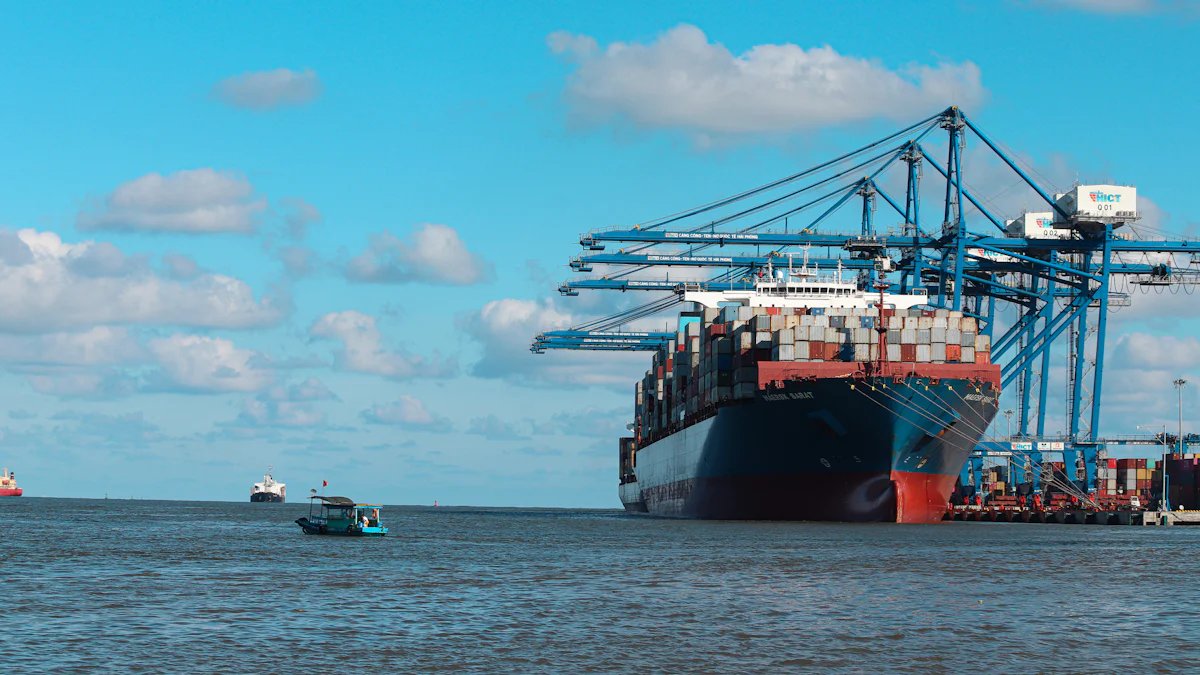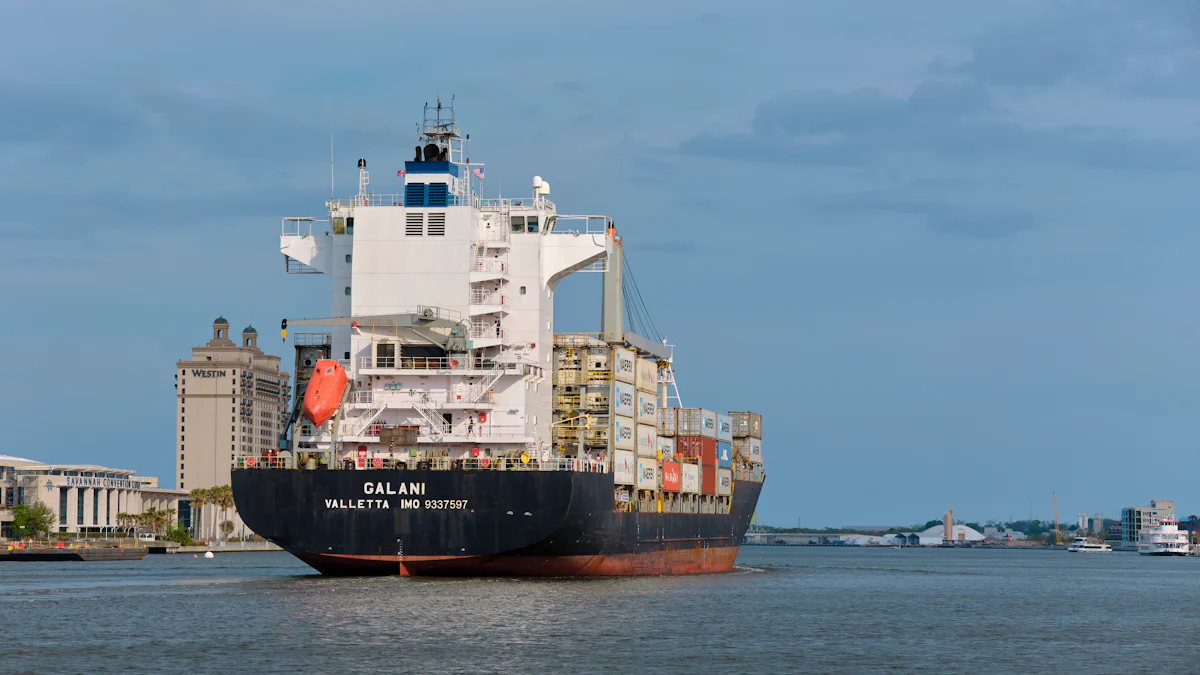Ocean Freight Market Forecast: Key Dynamics and Trends

The ocean freight market plays a crucial role in global trade, facilitating the movement of goods across continents. Understanding market dynamics and trends is essential for stakeholders to navigate this complex landscape effectively. The purpose of this blog is to provide a comprehensive Ocean Freight Market Forecast, shedding light on key factors that will shape the future of this vital industry.
Ocean Freight Market Forecast
Current State of the Ocean Freight Market
Global Market Size and Growth
The ocean freight market has seen significant growth over recent years. The market size reached USD 11.05 billion in 2023 and is projected to grow at a compound annual growth rate (CAGR) of 8.02% from 2024 to 2031. This growth trajectory will result in a market value of USD 18.97 billion by 2031. Factors driving this growth include increased global trade, advancements in shipping technology, and expanding international supply chains.
Key Players and Market Share
Several key players dominate the ocean freight industry. Major companies such as Kuehne + Nagel, DHL Supply Chain & Global Forwarding, DB Schenker, and DSV Panalpina hold substantial market shares. These companies, along with others like Sinotrans, Expeditors, Nippon Express, CEVA Logistics, C.H. Robinson, and Kerry Logistics, play pivotal roles in shaping the market. Approximately 20 carriers account for 90% of the annual revenue, with three major alliances making up nearly 90% of the remaining revenue.
Recent Developments
Technological Advancements
Technological advancements have significantly impacted the ocean freight market. The integration of artificial intelligence (AI) and big data processing capabilities has enhanced supply chain management. These technologies enable more accurate predictions of production and sales trends. Additionally, automation and digitalization have streamlined operations, reducing costs and improving efficiency.
Regulatory Changes
Regulatory changes also influence the ocean freight market. Increasing regulatory pressures and environmental concerns drive companies to adopt greener practices. For instance, the U.S. has implemented stringent regulations to reduce carbon emissions. These regulations affect logistics and supply chain strategies, compelling companies to innovate and adapt.
Challenges and Opportunities
Supply Chain Disruptions
Supply chain disruptions pose significant challenges to the ocean freight market. Events such as geopolitical tensions, natural disasters, and pandemics can disrupt global trade routes. Companies must develop resilient supply chain strategies to mitigate these risks. Diversifying supply chains and localizing key elements can enhance security and reduce dependency on international trade.
Environmental Concerns
Environmental concerns present both challenges and opportunities. The push towards sustainability requires companies to adopt eco-friendly practices. Green shipping initiatives and the use of alternative fuels are becoming more prevalent. These measures not only comply with regulations but also appeal to environmentally conscious consumers. Companies that invest in sustainable practices can gain a competitive edge in the market.
Key Dynamics Influencing the Market

Economic Factors
Global Trade Patterns
The global ocean freight market relies heavily on international trade. The continuous expansion of global trade fosters the need for efficient maritime transportation solutions. The rise of global consumerism and manufacturing trends fuels demand for reliable ocean freight services. Supply chain complexities also contribute to this demand. Companies must navigate these patterns to optimize their logistics strategies.
Currency Fluctuations
Currency fluctuations impact the cost of ocean freight services. Exchange rate volatility can affect shipping costs and pricing strategies. Companies engaged in international trade must manage these fluctuations to maintain profitability. Effective currency risk management strategies can mitigate potential financial losses. Understanding currency trends is crucial for making informed decisions in the ocean freight market.
Political and Regulatory Factors
Trade Policies
Trade policies significantly influence the ocean freight market. Government regulations and tariffs can alter trade routes and shipping costs. Companies must stay informed about policy changes to adapt their logistics strategies. Trade agreements between countries can facilitate smoother operations. Conversely, trade disputes can disrupt supply chains and increase costs.
International Agreements
International agreements play a vital role in shaping the ocean freight market. Agreements such as the Paris Agreement impact environmental regulations in shipping. Compliance with these agreements requires companies to adopt greener practices. International cooperation can lead to standardized regulations, benefiting global trade. Companies must align their operations with these agreements to remain competitive.
Technological Innovations
Automation and Digitalization
Automation and digitalization have revolutionized the ocean freight industry. Technologies like AI and big data enhance supply chain management. Automated systems streamline operations, reducing costs and improving efficiency. Digital platforms enable real-time tracking and better inventory management. Companies that embrace these technologies gain a competitive edge.
Sustainable Shipping Practices
Sustainable shipping practices are becoming increasingly important. Environmental concerns drive the adoption of eco-friendly measures. Green shipping initiatives and alternative fuels reduce carbon emissions. Companies investing in sustainability appeal to environmentally conscious consumers. These practices not only comply with regulations but also enhance brand reputation.
Emerging Trends in Ocean Freight

Shift Towards Sustainability
Green Shipping Initiatives
The ocean freight industry is increasingly adopting green shipping initiatives. Companies are implementing measures to minimize the environmental impact of their operations. These initiatives include using energy-efficient vessels and optimizing shipping routes. The goal is to reduce fuel consumption and lower carbon emissions. For example, some companies are investing in eco-friendly ship designs that use less fuel.
Alternative Fuels
Alternative fuels are gaining traction in the ocean freight market. Traditional marine fuels contribute significantly to air pollution and greenhouse gas emissions. To address this issue, companies are exploring cleaner alternatives like liquefied natural gas (LNG) and biofuels. LNG produces fewer emissions compared to conventional fuels. Biofuels, derived from renewable sources, offer a sustainable option for powering ships. The adoption of alternative fuels aligns with global efforts to combat climate change and promote sustainability.
Digital Transformation
Blockchain Technology
Blockchain technology is revolutionizing the ocean freight industry. This technology provides a secure and transparent way to track shipments. Each transaction is recorded on a digital ledger, making it tamper-proof. Blockchain enhances trust among stakeholders by ensuring data integrity. It also streamlines documentation processes, reducing paperwork and administrative costs. Companies can use blockchain to improve supply chain visibility and efficiency.
Internet of Things (IoT)
The Internet of Things (IoT) is transforming ocean freight operations. IoT devices collect real-time data from ships, containers, and ports. This data helps monitor and manage various aspects of shipping, such as temperature, humidity, and location. IoT enables predictive maintenance, reducing downtime and operational costs. Companies can use IoT to enhance cargo security and optimize logistics. The integration of IoT in ocean freight contributes to smarter and more efficient supply chains.
Market Consolidation
Mergers and Acquisitions
Mergers and acquisitions are reshaping the ocean freight market. Companies are consolidating to achieve economies of scale and enhance their competitive position. Larger entities can offer more comprehensive services and negotiate better rates with suppliers. Recent mergers have created industry giants that dominate the market. This trend is likely to continue as companies seek to expand their global reach and capabilities.
Strategic Alliances
Strategic alliances are becoming more common in the ocean freight industry. Companies form partnerships to share resources and expertise. These alliances enable companies to offer more diverse and flexible services. For instance, shipping lines may collaborate to provide joint services on specific routes. Strategic alliances help companies navigate complex regulatory environments and adapt to changing market conditions. By working together, companies can improve service quality and customer satisfaction.
Future Forecast and Expert Insights
Short-term Predictions
Market Recovery Post-Pandemic
The ocean freight market is expected to recover post-pandemic. The global economy shows signs of stabilization, which will drive demand for ocean freight services. Companies will likely resume international trade activities at pre-pandemic levels. The recovery will also benefit from increased consumer spending and manufacturing output. These factors will contribute to a gradual rebound in the market.
Expected Technological Advancements
Technological advancements will continue to shape the ocean freight market. Innovations in artificial intelligence (AI) and big data will enhance supply chain efficiency. Companies will adopt automation to streamline operations and reduce costs. Digital platforms will improve real-time tracking and inventory management. These advancements will provide competitive advantages to early adopters.
Long-term Projections
Future Market Growth
The ocean freight market will experience sustained growth over the long term. The market size is projected to reach USD 18.97 billion by 2031. Increased global trade and expanding supply chains will drive this growth. The Asia Pacific region will lead the market due to its booming e-commerce industry. Companies will need to adapt to changing trade patterns to capitalize on this growth.
Potential Disruptors
Potential disruptors could impact the ocean freight market. Geopolitical tensions may alter trade routes and affect shipping costs. Environmental regulations will require companies to adopt greener practices. Technological disruptions, such as blockchain and IoT, will change how companies manage logistics. Companies must stay agile to navigate these potential challenges.
Expert Opinions
Industry Leaders' Perspectives
Industry leaders emphasize the importance of adapting to market trends. Experts in market trends analysis highlight the need for companies to study long-term data. This analysis can help businesses respond to changes in market demand. Leaders also stress the significance of technological integration. Companies that leverage AI and big data will gain a competitive edge.
"Studying market trends can provide important insights into the broader market environment," says an expert in market trends analysis. "Companies can find and summarize long-term data by using trend analysis."
Analyst Forecasts
Analysts predict continued growth in the ocean freight market. Reports from Mordor Intelligence™ indicate a positive outlook for the industry. The market's dynamic nature will present both opportunities and challenges. Analysts recommend that companies invest in advanced technologies. This investment will help businesses stay competitive and meet evolving customer needs.
The blog has highlighted the key dynamics and trends shaping the ocean freight market. Staying informed about these market dynamics is crucial for businesses. Understanding trends helps in making strategic decisions and anticipating changes. Companies can leverage insights to adapt their strategies and maintain a competitive edge. Market trend analysis supports decision-making and long-term planning. Businesses should use this information to navigate the complexities of the ocean freight market effectively.
See Also
Revealing the Latest in Sea Freight Logistics for 2024
Understanding the Influence: Trends in Logistics Risks
Analyzing the Comprehensive Future of Less Than Truckload Freight
5 Impactful Trends Shaping the Efficiency of Future Supply Chains
Exploring the Unleashed Possibilities: AI in Logistics Revealed
